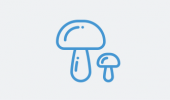News
Department of Biology Has Successfully Organized The 5th Summer Course on Biology
- 14 September 2023
- Last modified at 14 September 2023
Department of Biology Has Successfully Organized The 5th Summer Course on Biology
The 5th Summer Course on Biology has been held on 5-12 August 2023, organized by Department of Biology, IPB University. This event consists of two activities. The first activity is a lecture class on 5-6 August 2023 at Department of Biology, IPB University, while the second activity is field course in Belitung Island on 7-12 August 2023. This course was participated by 45 students coming from different universities, such as Universiti Malaya-Malaysia, Wageningen University-Netherland, Gyeongsang University-South Korea, Bangka Belitung University, and IPB University.
In the first day, this event has been officially opened by the Dean of the Faculty of Mathematics and Natural Sciences, Dr. Berry Juliandi. Then,
The event started with a lecture session with Dr. Nur Ardiyana Binti Rejab from Universiti Malaya, discussing about plant genetics. Then, the lecture was continued by Dr. Rika Raffiudin and Dr. Rika Indri Astuti, talked about stingless bee diversity and fermented food, respectively.
In the 2nd Day, there are some interesting lectures from the experts. Ted Hilbert from Digital Transformation Advisor-OTI International, CTO-Cerdas AI Research Indonesia (CARI), delivered material about digital tourism, how its contribution to promote the sustainable tourism. In the same day, Dr. Amanda Katili and her colleagues from the Climate Reality Project Indonesia, conveyed about biodiversity-based tourism and the important role of youth in its implementation.
The last lecture in Day 2, was delivered virtually by Prof. Cathy Dwyer from University of Edinburg, UK, discuss about applied animal behavior and animal welfare.
In the 3rd day, all summer course participants and committee have arrived in Belitung Islands.
The arrival of the participants was warmly welcomed by the regent of East Belitung, Drs. Burhanuddin. The visit then continued to open pit Nam Salu, ex-open tin mining area.
The participants also continued their activities to spend the night and study local biodiversity in Tebat Rasau.
In the 4th day, participants visited Tebat Rasau in East Belitung. This tourism destination is a home for the unique Fishes and plants. It is called Tebat Rasau because there are rasau, a kind of pandan plant that usually lives on the river and lake side. Peramun Hill, another attraction of Belitung.
Entering night, tourists can see the wide-eyed mini monkey, commonly known as the tarsius. Locals usually call it pelilian. The shape of the tarsius is indeed unique. The size of a kitten, monkey-shaped with a long tail and has large eyes and can rotate the neck as much as 180 degrees. It is a nocturnal animal. The existence of tarsius is very much protected by residents because of their small numbers. Within one week, only three times are visitors allowed to see tarsius. The way visitors can see tarsius is also unique. tarsius can bee see in their natural habitats, not in cages. This was done to preserve the tarsius.
In the 5th Day, All participants visited Lengkuas and Kelayang Island. Lengkuas Island is a small island with a colonial lighthouse located in the coastline of the island. The combination of perfect white sand, palm trees, giant granite boulders, and calm blue water makes Lengkuas island one of the best places in Belitung. In this island, the participants took real action to care for the environment by collecting trash around the island.
In Kelayang Island, all participants release babby sea turtle. Through this action, the population of the turtle in their natural habitat is expected to increase.
In the 6th Day, All participants visit Terong tourism village. The village is an environmental conservation geosite consisting of four sub-sites, namely the agro-tourism focused Bebatu, the nature-themed Bukit Tebalu, the creative tourism-based Aik Rusa Berehun and the surrounding mangrove forest. The geosite is valued as an example of proper ex-mining land management and a good mining activity prevention strategy using community-based tourism activity. In this village, All students planted mangroves particularly in the coastal area. This mangrove planting activity is a good medium for students to contribute an effort to protect coastal areas from abrasion disasters that often occur in this area. in this village, students planted mangroves. after that, they continued to find and collect shellfish, as well as cook them for use as side dishes in the dinner. All students also learned to weave using lais leaves. This leaf is a type of plant that grows a lot in damp and swampy forests. The leaves are long, similar to pandan leaves, but overgrown with sharp small thorns on the outside. There are many types of items that can be made from woven leaves made from Lais leaves, such as bags, hats, small sacks, cellphone cases, tissue holders, mats and so on. planting and harvesting mustard greens is the last activity in Terong tourism village. They looked happy because they could harvest a lot of mustard greens here.
In the 5th day, there is student seminar to discuss the uniqueness, problem and possible solution of several tourist destinations that had been visited, namely Nam Salu Open Pit, Tebat Rasau, Peramun Hill, Tanjung Kelayang, Lengkuas Island, Terong Village. In addition, the participants also visited the Belitung Geopark Center to get an overview of the geopark sites in Belitung, then continued to Sepiak Batik Center. In this place, participants are trained to make an ecoprinting batik.
















































.png)






.png)
















Login
LoginSitemap
map